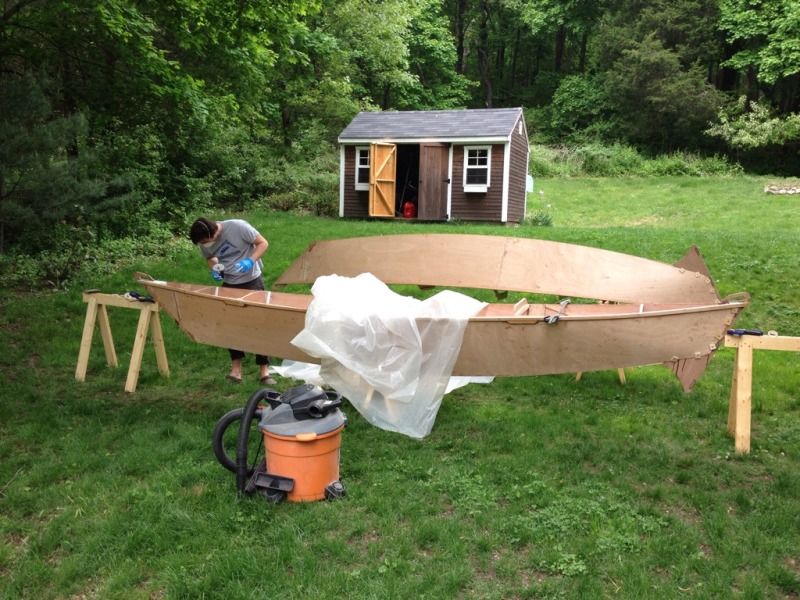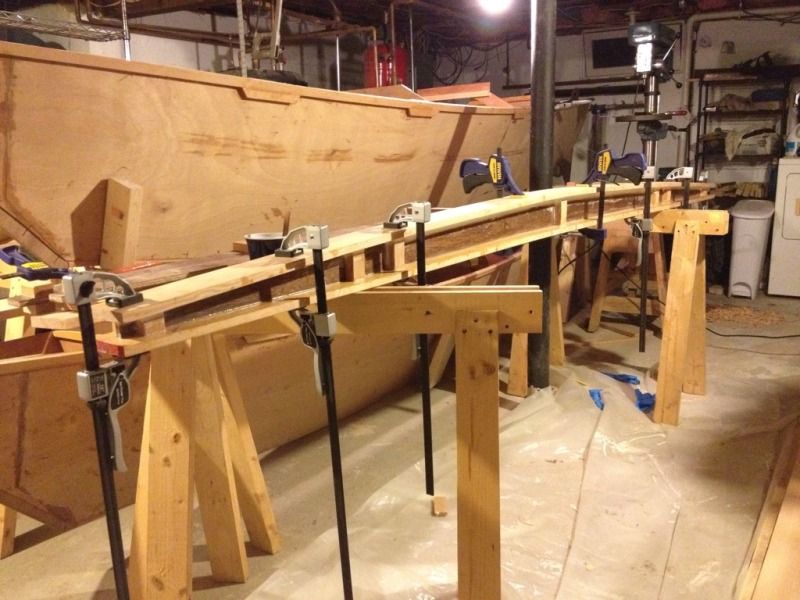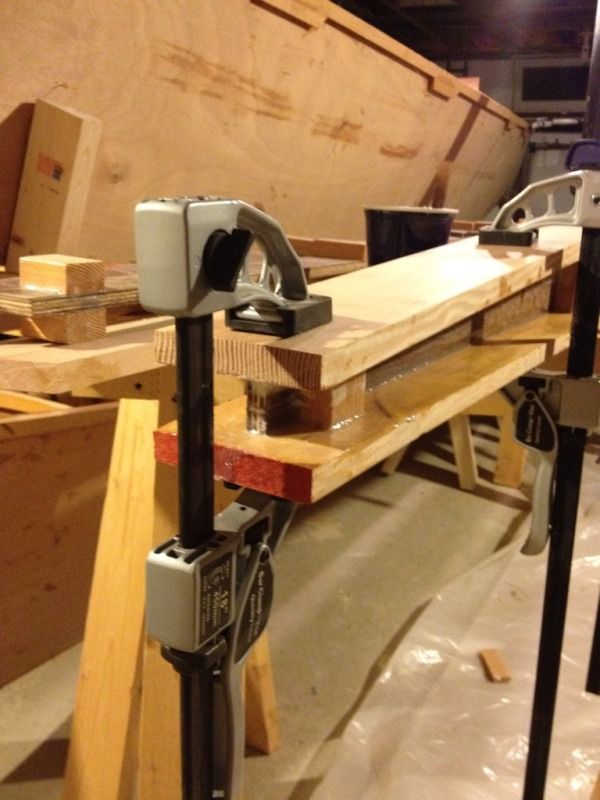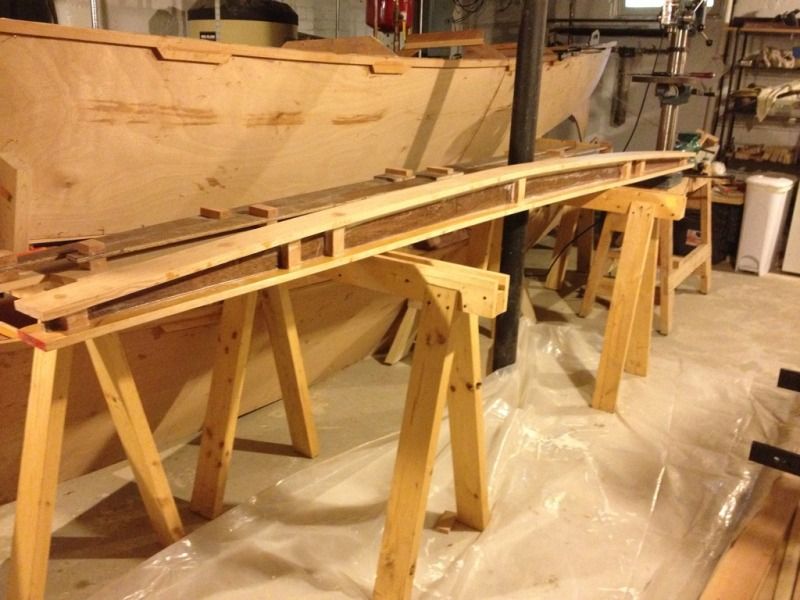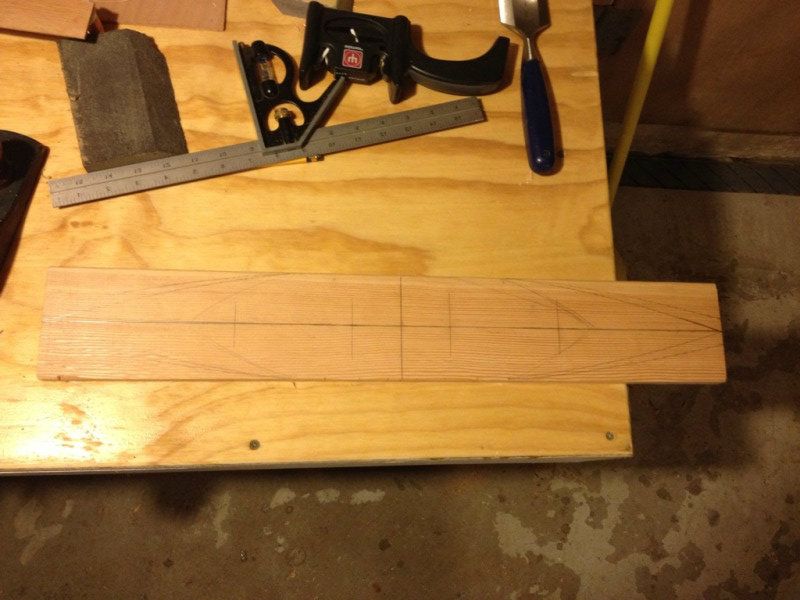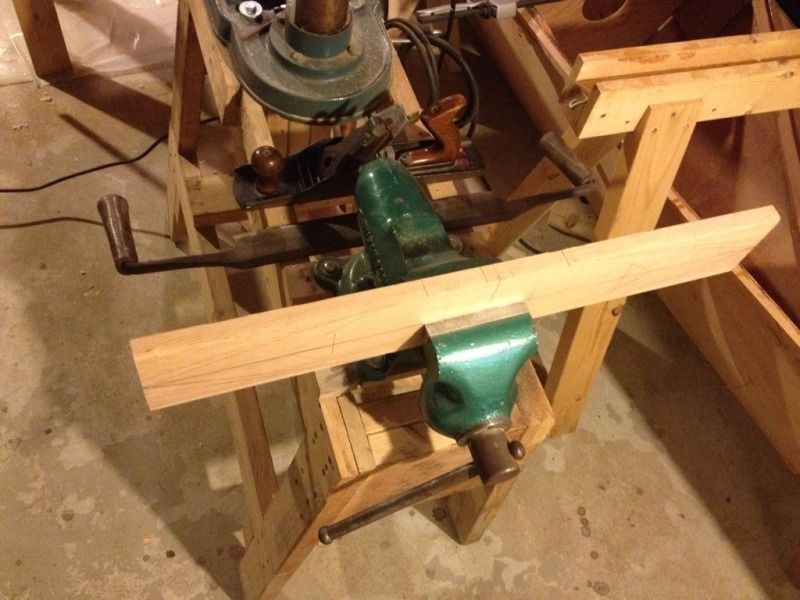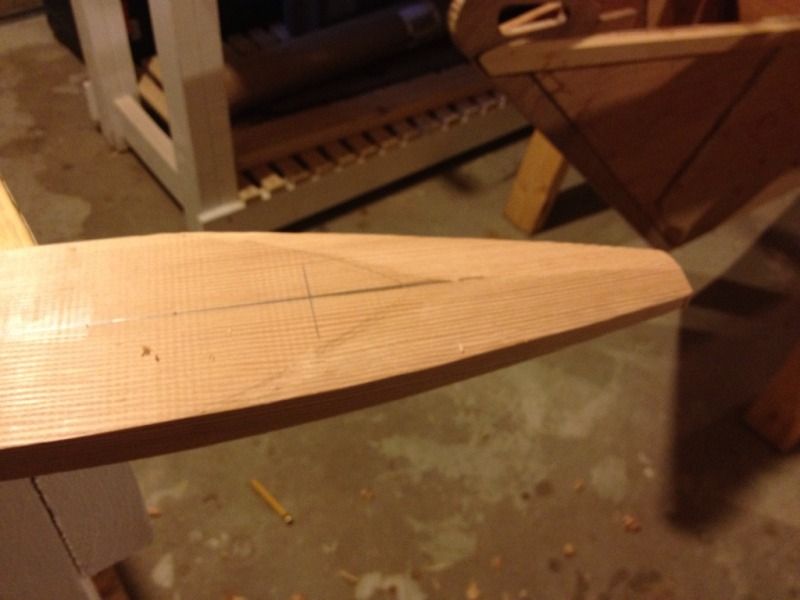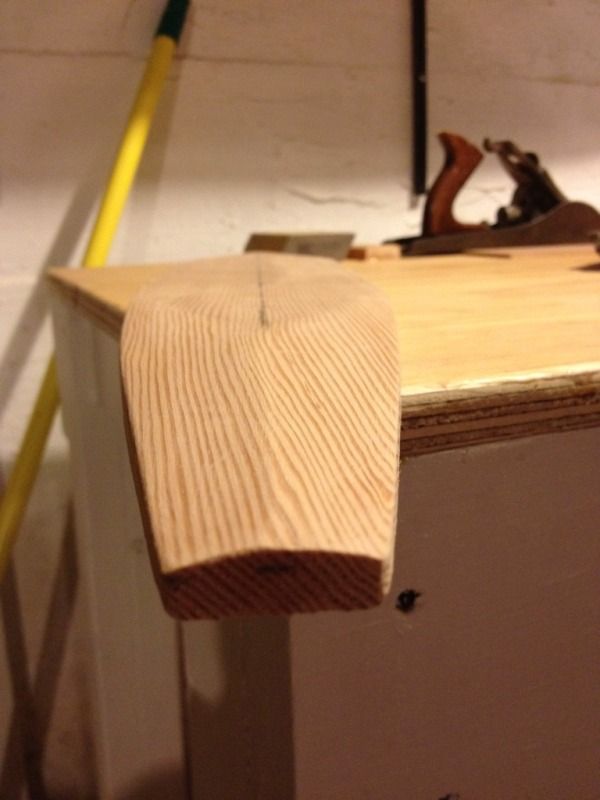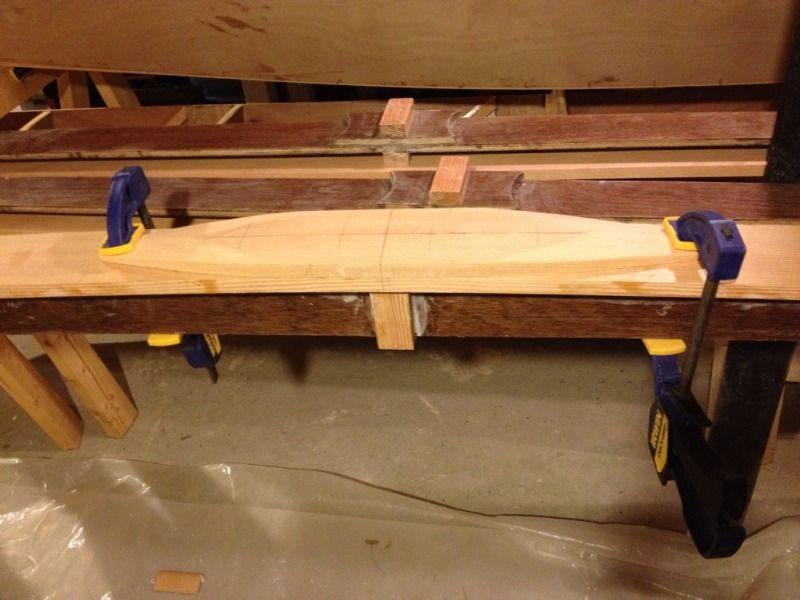Today we found ourselves with a free day to spend working on the boat and then it rained non-stop. The weather is always gorgeous when one or the other of us is busy, but we can't let that stop us getting out on the water. Since we are confined to the basement we decided to work on the beams and save the hulls for another day.
The compression support blocks were trimmed pretty close when we glued them, but needed some adjustments so that the top and bottom boards of the I-beams would sit level. We are trying to keep all of the saw dust generating activities out of the basement but it was raining so this was our compromise. The saw-rasp evened things up pretty quickly
We took advantage of a brief break in the rain to sand the epoxy coated faces of the center beam pieces. There was some concern with the metric conversions that we may have made the beams too narrow so we double checked while measuring for the top board of the main beam. It is actually an inch long which means we'll get that much more room when sailing.
In the dry test fit it looked like we could get away with four clamps and use the stiffness of the board to close all the gaps in a fair curve.
In reality it took 7 clamps, good thing we only epoxied up one at a time! This was about the time Cam said, "If we just had more space and more clamps, think about how much we could get done!"
Sighting down the beam makes sure that the it is straight and centered. Right after this photo we adjusted the closest part a bit to the right as you can see that it is a little off.
After a few hours it was time for more fillets. Here is the glue joint smoothed out with our finger.
The middle two sections get a 1.25" radius fillet.
The outside sections step down to a 5/8" fillet which you can just see in the corner of this picture. Probably could have done the fillets once both boards are on but it seemed easier to do now while there was better access. For the next ones I'll wait till the clamps are out of the way, it's hard to keep the epoxy off of them.
One half of one beam down, can't wait for the weather to clear so we can move outdoors. That will solve the space issue, I'm not sure I'll ever have enough clamps though.
